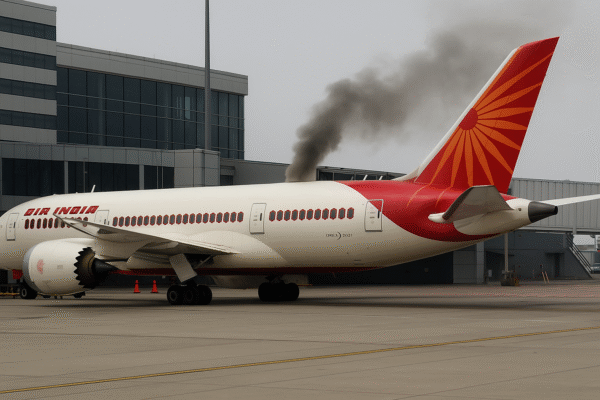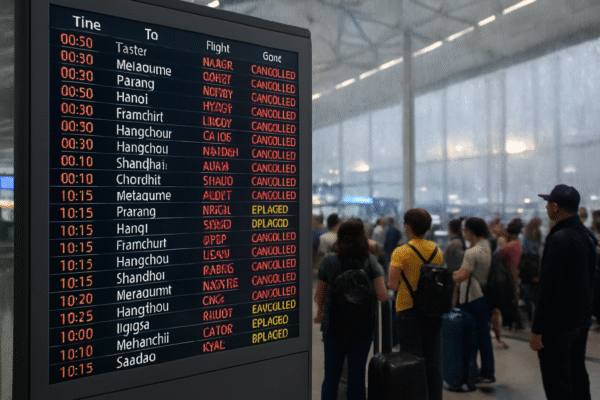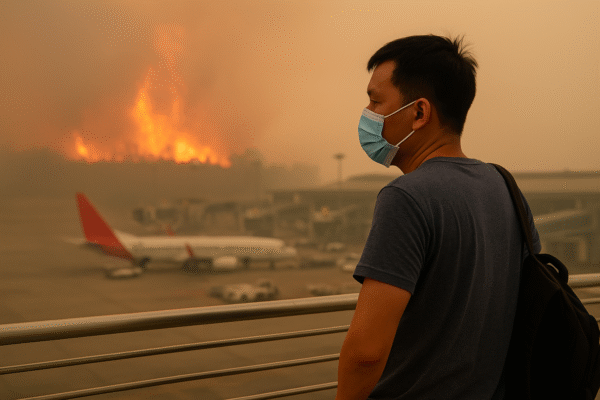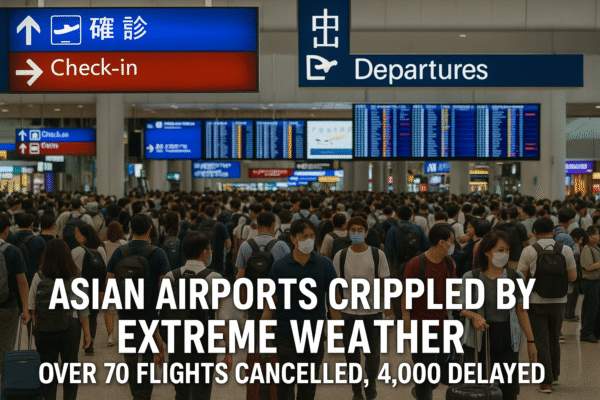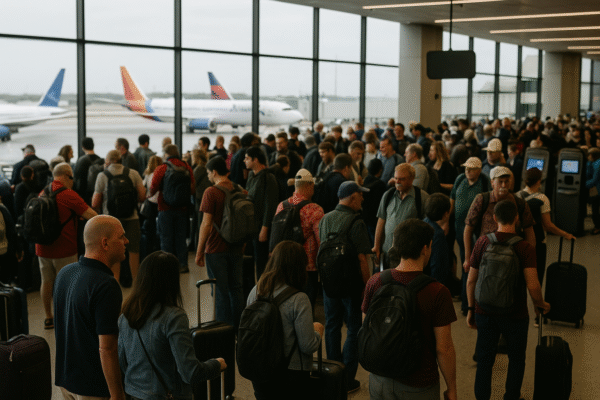Severe Weather Triggers Over 40 Flight Cancellations Nationwide as U.S. Airports Grapple with Summer Travel Chaos
As the U.S. nears the end of July’s peak travel season, more than 40 domestic and international flights have been canceled across major U.S. airports, with Alaska Airlines, Delta Air Lines, American Airlines, and United Airlines among the hardest hit. Ongoing severe weather conditions—high winds, thunderstorms, and air traffic congestion—have crippled operations at key hubs including Seattle-Tacoma (SEA), Los Angeles International (LAX), New York JFK, Chicago O’Hare (ORD), and Newark Liberty (EWR), leaving thousands of passengers stranded or delayed.
According to real-time FAA and airline data, Alaska Airlines was the most affected carrier, with 15 canceled flights and over 140 delays. Delta reported 12 cancellations and over 200 delays, followed by American Airlines with 7 cancellations and United Airlines with 6. A combination of staffing constraints, weather volatility, and overburdened airport infrastructure has caused ripple effects across the country, worsening the summer travel crunch.
Alaska Airlines Leads in Disruption at West Coast Hubs
Alaska Airlines, which maintains a dominant presence at Seattle-Tacoma International Airport, bore the brunt of cancellations. Eight of its canceled flights originated from SEA, with others spread across Los Angeles and San Francisco. Over 100 additional Alaska flights were delayed at SEA alone, accounting for more than 22% of its scheduled departures and arrivals for the day. Destinations impacted include Las Vegas, Spokane, and Portland, with knock-on effects on regional connections.
LAX also saw multiple Alaska cancellations, including early-morning and mid-day flights to Seattle and Spokane, frustrating travelers attempting to reach key Pacific Northwest destinations.
Delta, American, and United Affected at Major National Gateways
Delta Air Lines was the second-most affected airline, with notable disruptions at JFK, Boston Logan, and San Francisco. Among the most delayed flights were long-haul services from JFK to San Francisco and from Boston to Southwest Florida.
American Airlines canceled multiple cross-country flights, including from Chicago to Los Angeles and from LAX to Chicago. At JFK, Delta and American reported seven combined cancellations.
United Airlines experienced concentrated disruption at Newark Liberty International, with multiple flights to Washington Dulles canceled, as well as westbound flights from LAX and Chicago O’Hare.
These cancellations come as airlines work to recover from broader operational constraints—including staffing shortages in air traffic control and crew rotations affected by weather-related knock-on effects.
Ground Stops and Weather Warnings Compound Chaos
The Federal Aviation Administration (FAA) issued multiple ground delay programs at airports in the Northeast and Midwest, including JFK, EWR, and ORD, in response to thunderstorm activity and low visibility. These precautionary delays disrupted airspace flow and compounded airline operational backlogs, particularly for carriers that rely on tight hub connections.
According to the National Weather Service (NWS), storm systems tracking across the northern Plains and Great Lakes brought wind gusts exceeding 40 mph and heavy rain bands that caused temporary ramp closures and runway slowdowns. In Southern California, residual haze and wind shear from shifting marine layers delayed operations at LAX.
Full List of Affected Flights Across Major Airports
A sample of canceled flights highlights the geographical spread of the disruption:
- Chicago O’Hare: American AAL2012 to LAX; United UAL3918 to Denver
- Los Angeles: Alaska ASA1279 to Spokane, ASA1305 to Seattle; American AAL2321 to Chicago
- Seattle-Tacoma: Alaska ASA658 to Las Vegas; ASA1306 to LAX
- San Francisco: Delta DAL319 to JFK; Alaska ASA718 to Las Vegas
- Newark: United UAL1992, UAL3930, UAL3929 to Washington Dulles
- Boston Logan: Delta DAL1192 to Southwest Florida
- JFK (New York): Delta DAL2068 to LaGuardia; Alaska ASA623 to Anchorage
These high-profile cancellations underscore the fragility of tight summer schedules amid constrained operational buffers.
Broader Impact: Over 30 Airlines Facing Turbulence
In addition to the Big Four U.S. carriers, dozens of international and regional airlines reported cascading delays, including JetBlue, British Airways, KLM, Emirates, Qatar Airways, and Air New Zealand. U.S. regional operators such as SkyWest, Republic, and Frontier saw extended wait times and route reassignments.
Low-cost and legacy carriers including Southwest, Allegiant, Spirit, and Hawaiian Airlines also reported multiple delays. International airlines ranging from Lufthansa Cargo to Ryanair and EVA Air reported schedule impacts due to congestion at key U.S. entry points.
Airlines Issue Waivers, Urge Travelers to Check Status
Airlines have responded with flexible rebooking options and fee waivers for affected passengers. Alaska, Delta, and American each posted travel alerts on their websites, advising customers to check real-time flight status and arrive early at the airport.
United Airlines encouraged customers traveling through New York, Chicago, or San Francisco to allow extra time and take advantage of digital check-in to avoid additional lines.
Despite these measures, airports like LAX, JFK, and SEA remain crowded, with TSA screening lines backing up and baggage services delayed.
Aviation Industry Under Scrutiny Amid Rising Summer Strain
As July winds down, travel analysts warn that unless systemic changes are made—including bolstering ground staff, investing in air traffic control technology, and reconfiguring summer scheduling—airlines could face mounting public and regulatory pressure.
Industry groups such as Airlines for America (A4A) have urged the U.S. Department of Transportation to address bottlenecks in airport and airspace capacity. Meanwhile, the FAA has increased funding for controller hiring, but results may not be felt until later travel seasons.
With August expected to bring even more travelers into the skies, particularly for back-to-school and Labor Day holidays, the travel system remains vulnerable. For now, U.S. flyers are advised to stay flexible, monitor alerts, and prepare for ongoing turbulence—on the ground and in the air.
For more travel news like this, keep reading Global Travel Wire





